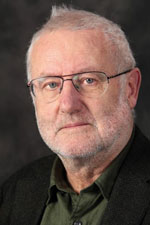Part One: Language and the Chart
On October 6th 1969 one of the founders of Structuralism, the anthropologist Claude Levi-Strauss, sat down to discuss the subject with the leading French astrologer of the day, André Barbault. During the course of the interview, Levi-Strauss expressed his great interest in astrology as system of linguistic relationships that formed the basis of the manner in which language was used to comprehend the world. Astrology had proved of great value because 'it helped man to think for thousands of years'.[1] This is a remarkable claim: that the complexity of astrology assisted humanity's drive to understand how language might create our sense of the world. While acknowledging that Structuralism has long fallen from academic favour it is still significant that Levi-Strauss saw astrology as a fundamental system of symbols that was the precursor to a general understanding of linguistic construction. The phrase 'the language of astrology' has been voiced extensively but its implications have not been properly addressed. The phrase itself remained mainly a metaphor for as far as I know, little attempt has been made to apply current, post-structuralist thought to the subject to see if anything of value can be found there. I would like to address this issue again, expanding earlier attempts to see astrology as a language, one that shares great similarity with more conventional attempts to articulate the human condition. First, we should start with the birth chart itself.
The Birth Chart
The birth chart is a diagram of the sun, moon and planets as they are seen from a particular point on earth at a specific moment of time. It takes the form of a circle around which are inscribed the signs of the zodiac. Inside the circle there are glyphs for planets which are allocated numbers indicating their position in the zodiac. Some of the glyphs are joined by coloured lines, others are not. Some charts may have two concentric circles with another set of planets inscribed in different positions, indicating their positions on the day of the reading or for some point in the future. Faced with such a schematic, someone unfamiliar with astrology is much like the westerner seeing Chinese ideograms for the first time: how can this possibly make sense?
The astrological language includes the use of words, numbers, signs, geometric patterns, and arithmetic – as is the case in many specialist subjects. How is such a language used? Although astrologers often refer to the birth chart as a picture or a map it is much more than that. A map or a picture stands in some kind of relationship to what it is portraying - here we can question the saying the map is not the journey - for in many respects the birth chart describes both the person and the journey in a variety of symbolic forms, which will be discussed further. We can start by questioning if the astrological glyphs are fundamentally different from words. Is this really the case? Is the '+' sign fundamentally different from the word 'add'? If you did not know what the '+' meant it would be explained to you in everyday language. Just as in chess, where the various pieces embody the moves allocated to them, so all signs express the function language bestows upon them.
While its common to speak of i as the symbol for Aries or*as standing for the planet Saturn, in reality the glyphs embody a whole library of functions and applications that shift according to their placement within the chart. As Wittgenstein put it 'an entire mythology is stored within our language'[2] which is particularly true for a discipline that embodies the beliefs and practices of cultures that have been instrumental in creating our world. To explore this idea further, we might wish to look more closely at how signs and symbols are used.
Symbols & Signifiers
All letters are symbols. The letters you are looking at are no less 'symbolic' than familiar representations of the sun as a circle, the moon as a crescent, or Egyptian hieroglyphics, Japanese katakana or Thai script. While purists will categorise different forms of writing as syllabic, alphabetic, pictographic, ideographic, etc. they remain essentially symbolic in that they stand for something other than what they are.

Clearly the glyphs for the sun and moon are pictorial representations of the bodies themselves. This is not so for the other planets. The glyph for Uranus, for instance, was based on the letter H in honour of Herschel, who first identified it. The glyphs for the other planets are claimed to have arisen because they symbolise certain qualities associated with the meaning of the planets that they signify, rather than they what may actually look like.
While some of these claims may seem somewhat esoteric the essential point is a profound one: a single mark or squiggle can come to represent a raft of complex ideas that have emerged from a specific culture and gains its use from how that culture employs particular words or images. It's not a matter of our employing symbols (writing, pictures, glyphs, gestures, etc.) as if we stand apart from them and use them as tools, our whole world and who we are is formed by the nature of language as expressed by the vast range of all that symbols can signify.
Rather than having a meaning as if its sound holds some essential content, a word is a signifier. It points to a thing or a concept but is not identical with it. As opposed to having some essential meaning, the signifier has a usage that is specific to the situation in which it is employed and depends on how that situation evolved and is understood by the culture that uses it. Words (sounds) do not arrive with meanings already attached, so to speak, but become comprehensible in specific public situations. In short, it is the world that ultimately validates usage rather than meaning emerging from the image itself. With this thought in mind, we can see the confusions that can arise when the same situation is described by those with very different world-views.
Scientists, for example, will see planets as objects of enquiry, having no purpose or meaning. Meanwhile, to the astrologer planets signify a variety of assumed qualities for they are using language differently. Some of the problems encountered when astrologers and scientists attempt to debate one another arise from the fact that both parties have quite different approaches towards interpreting the movement of planets and consequently create different pictures of the world. While it may be tempting to suggest that scientists use the word Mars literally while astrologers prefer metaphor, all language is essentially metaphoric in that it cannot come to rest on anything solid; there is only usage and customs of different cultures in which it finds expression. As the philosopher Rüdiger Safranski put it another it: there is only the active 'discussion' with that-which-is, during which we also show ourselves differently. And all of this is a creative process, since every design of Being produces, materially and spiritually, a world interpreted and organized in a definite way.[3]
Safranski's observation draws attention to an intriguing phenomenon. In the worlds of science, philosophy, and psychology there exist numerous approaches towards understanding ourselves and our world, many of which are often in radical opposition to each other, even when they co-exist within the same discipline. A multiplicity of approaches persists despite that fact that each can generally support their thesis coherently and logically. Safranski's mentor, Martin Heidegger, noted that we tended to pick our preferred version, calling it 'truth' and stopping there. We have found what satisfies us and we go on our way without considering the significance of what we have just experienced: what is the nature of the world itself if it can be described in so many consistent, variant and contradictory ways? While this raises the question as to which view of the world is correct, it does not point to a definitive answer. If we seek to find such an answer by using the same frame of reference in which the question arose then we are like someone buying a second copy of the same newspaper to check the accuracy of the first. Surely mathematics is free of such mistakes.
Numbers
If the nature of language is so hard to pin down, then what of the mathematical language that scientist and astrologers employ every day, is that similarly problematic? After all, NASA can send a probe to Pluto using vastly complex algorithms and it gets there, spot on time. It doesn't metaphorically get there, it doesn't metaphorically take precise measurements and send back metaphoric photographs. So, what about the ambiguity of metaphors when it comes to mathematics? Aren't numbers just numbers, or do they also depend on how they are used?
Phrases like 'the laws of science,' 'the laws of physics' and so on give us pictures of a universe following a series of codes which scientists are in the process of unravelling. Such a picture is both beguiling and misleading. To suggest that planets are 'following laws' while orbiting the sun is as anthropomorphic as suggesting that engines sleep in engine sheds at night.
The 'laws' that we are talking about are human inventions that attempt to identify and predict the motions of the planets. They do this exceptionally well because they have emerged from accurate observations made over centuries, but in essence they are a record of planetary movement described in a form of human language (mathematics) which is itself evolving. The 'laws of physics' as initially invented by such as Isaac Newton do not apply when measuring interstellar distances (and can also be a bit shaky in some applications within the solar system as Einstein discovered) and thus new forms of calculus have to be imagined to account for perceived phenomena. However, it should be noted that Newton's primary interest was alchemy which includes astrological components, as does his attempt to correlate the precession of the equinoxes with a biblical account of history. Introducing his work Principia he wrote:
I likewise call attractions and impulses, in the same sense accelerative, and motive; and use the words attraction, impulse, or propensity of any sort towards a centre, promiscuously, and indifferently, one for another; considering those forces not physically but mathematically: wherefore the reader is not to imagine that by those words I anywhere take upon me to reason thereof, or that I attribute forces, in a true and physical sense, to certain centres (which are only mathematical points); when at any times I happen to speak of centres as attracting, or as endued with attractive powers[4].
This statement clearly questions simplistic ideas of causality and is a far cry from how physicists interpret his work today. Newton's insistence that 'mathematical points' and not 'forces' dictate the nature of planetary movements is more in line with the astrological claim that the planets do not hold some conjectured physical influence, rather their positions are indicative of the motion of events and their potential outcome.
As Ludwig Wittgenstein was later to observe, numbers can be used for various purposes and to some extent, like all forms of language, their usefulness (or otherwise) is dependent on context. He argued that numbers, like other abstract entities, are not discovered as existing independently of human activity but are instead products of human language and practice. Numbers are words we use in various forms and activities to express and manipulate concepts, but they do not possess a separate existence outside of these uses.[5]
Thus, we can see that numbers can be used as forms of measure to make our world comprehensible and to some extent controllable, but are also endowed with the specific meanings by astrologers and others to identify significant geometric patterns, called 'aspects' by astrologers, whose meanings also arose as a consequence of research and observation, many of which can be statistically verified[6] . While astrology can be researched in a purely quantitative manner, like all attempts to describe or quantify human behaviour, the endeavour to demonstrate some form of essential meaning is fraught with a raft of procedural and cultural issues. For many a philosophical approach is more valuable insofar that the conundrum of astrology can be explored more readily as an arena open to addressing less conventional ways of thinking.
Being in Time

The German philosopher Martin Heidegger was a challenging and controversial thinker who took some of Nietzsche's ideas further by focusing on the issues that arise when traditional certainties are swept away. His views are of importance as they impact directly on both astrology and science. The human being may be described as an amalgam of assumed planetary principles, or seen as the product of biological mechanisms. A particular quality or trait may be ascribed to a specific aspect, or to an arrangement of genes. Both attitudes have inherent, reductive assumptions which Heidegger's views challenge in that they radically question the Cartesian picture of the human being as some sort of discrete object existing in the world.
Nothing makes this clearer than Heidegger's term for the human being: Dasein, which means 'being there.' The 'there' is our world, but our existence in it is not as an object amongst other objects, but as a being that discloses the nature of existence and the possibilities of life that are available in a particular moment of time. It is this focus on the manner in which the individual is enmeshed in the nature of the world -indeed only made possible by the world -that has great similarities with the astrological paradigm.
Heidegger claims that it is through the nature of time that we disclose different possibilities of our being, individually and collectively, but time has the final say. It is no longer possible for us to disclose the world of the ancient Greeks, and not yet possible to reveal the way of being in the year 3000. It is not 'human nature' which shifts and evolves against a static background, rather we embody the shifts of time and language, a thought that astrology echoes in its unique way. If we ask 'what is time' Heidegger's response is to remind us that such a question treats time as if it were an object that can be observed as we might observe a table or a chair. For him time is not a 'what', it is a 'how'. It is the 'how' of time, the manner in which time is being expressed in the world, that the astrologer seeks to decipher.
This 'how' does not have a specific location, but shows itself within and without. Wittgenstein captures this with his comment 'the world of the happy is quite other than the world of the unhappy.'[7] As the existential psychotherapist Miles Groth puts it with regard to what may be taking place for someone in distress '[the] pathology is in the patient's world, not inside the patient's psyche. It is impossible to separate his experience of things from this world and lived time'[8]. The astrological paradigm is similarly one in which the destiny of the individual and the world are continuously intertwined; its language admitting to no firmly defined realms of inner and outer.
When Heidegger writes of language, he does not refer to a specific human skill –an ability to speak- but as something far more fundamental per his famous phrase, language is the 'house of being.' It is language that makes human beings possible. For Heidegger, language is not the creation of humans, rather humans are made possible by language. Language is not an activity but an experience, an experience to 'be undergone'. In a comparable manner the astrologer might suggest that the moving planets combine the language of symbols and mathematics to give a picture of what such an experience might include, and how they might be experienced at a particular moment. Wittgenstein echoes such thoughts with the claim that an understanding of ourselves and the world is time-dependent when stating that 'The stream of life, or the stream of the world, flows on and our propositions are, so to speak, verified only at instants. Our propositions are only verified by the present'[9].
Wittgenstein's approach had a profound effect on the course of western philosophy by drawing attention to the way that most philosophical problems only existed as a consequence of the manner in which they were formulated. 'The problems are solved not by coming up with new discoveries, but by assembling reminders of what we have long been familiar with'[10]. He saw his task as 'describing, not explaining'. In such a way one might see things as they were and as they occurred in everyday life. His focus on the innumerable ways the language of life showed itself offers astrologers a way of finding a place for their own style of thinking.
In the next section we shall look at this more closely.
Go to Part Two: Wittgenstein and Language Games
Mike Harding

Mike Harding spent many years as a Faculty Council Member in the Faculty of Astrological Studies, and was Director of the Faculty’s Counselling Within Astrology course. He is also a past chairman of the Astrological Association of Great Britain and of the Association of Professional Astrologers. He worked together with Charles Harvey for many years, primarily in business and mundane astrology and wrote with Charles the invaluable book 'Working with Astrology'. Mike is also author of 'Hymns to the Ancient Gods' and of numerous articles for various astrological publications. Currently, Mike is working as an existential psychotherapist and is Chair of the Society of Existential Analysis. He is interested in the cross-over points between psychoanalysis, existential practice and the ancient wisdom traditions. Mike is also a Course Leader, Foundation Programme, at Regent's University London in Humanities & Social Sciences. (Photo: Regent's University.)
Footnotes for Written in the Stars: The Language of Astrology, Part One
[1] Culture and Cosmos Vol 18 No 2 page 150
[2] Philosophical Occasions 1912-1951 (1993). Edited by Klagge and Nordmann. Hackett Publishing USA p133
[3] Martin Heidegger: Between Good and Evil, by Rudiger Safranski. Harvard University Press, 1988. Page 219
[4] Mathematical Principles, translated and edited by Florian Cajori University of California Press (1960), page 5.
[5] Wittgenstein, W. Philosophical Investigations (1958).Translated by G. E. M. Anscombe. 2nd ed. Oxford: Basil Blackwell,
[6] The Astrological Association's Correlation is the most respected research journal. In particular Vol 32 (2) 2020 carries a list of 63 research projects supporting aspects of the astrological thesis.
[7] Tractatus 6.43
[8] Groth, M. (1996) Existential Therapy on Heideggerian Principles, in the SEA Journal, Vo. 8.1
[9] Ludwig Wittgenstein (1975) Philosophical Remak, Blackwells, para 48
[10] Ludwig Wittgenstein (1958) Philosophical Investigations, Blackwell. Para 109

